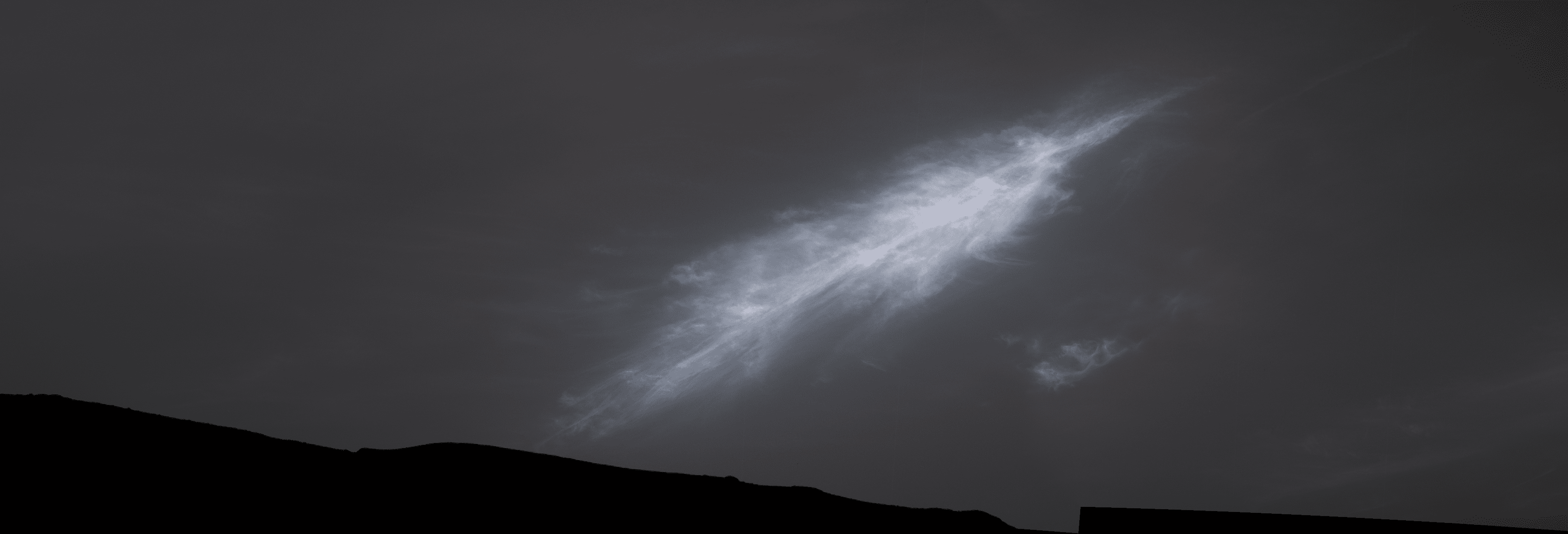The Curiosity rover is not just studying Martian rocks, sometimes it finds time to look at the sky. This has allowed it to capture images of the rare Martian clouds, expanding our knowledge about the Red Planet’s atmosphere. On February 2, it was rewarded with the image above, the clearest image ever taken of sun rays on Mars.
In 2021, Curiosity conducted cloud surveys using its navigation cameras. Although scientifically useful, the black-and-white images don’t do the best job of capturing the delicate beauty. This year, Curiosity’s operators chose to use the color mast camera (MastCam) on a survey that started in January, and is now approaching its end.
To those more used to watching clouds on Earth, the image carries a familiarity, but Curiosity’s operators can see something more. They note how high these clouds must be to be illuminated by the setting Sun. The ordinary water ice clouds on Mars don’t get above an altitude of 60 kilometers (37 miles). The Jet Propulsion Laboratory proposes those seen shining in this image are instead composed of crystals of carbon dioxide (dry ice).
The survey has captured other revealing cloud images, such as the iridescent feather-shape seen below and photographed on January 27.
The colors of this feathery cloud, photographed by Curiosity from Gale Crater, reveal the size of the ice crystals within them. Like the image at the top, it is made by stitching together a series of 28 images taken by Curiosity’s MastCam. Image Credit: NASA/JPL-Caltech/MSSS
“Where we see iridescence, it means a cloud’s particle sizes are identical to their neighbors in each part of the cloud,” said Dr Mark Lemmon of the Space Science Institute in Boulder, Colorado, in a statement. “By looking at color transitions, we’re seeing particle size changing across the cloud. That tells us about the way the cloud is evolving and how its particles are changing size over time.”
Clouds on Mars are never common, but they are seen most frequently in the equatorial regions when Mars is furthest from the Sun. Mars has a much more elongated orbit than the other planets, so there is a substantial temperature difference between its closest and further points. At higher latitudes, this is overwhelmed by the seasons, but near the equator, the variation can drive meteorological conditions.
As a result, Curiosity puts some effort into cloud observations every Martian year – roughly every second year on Earth. In 2021, this led to the discovery that the first clouds of the season are much higher than others. The height can be estimated from the way the clouds change color. Similar noctilucent clouds on Earth glow bright against the dark sky. By measuring the Sun’s location as they darken, their height can be calculated.
The operating team suspected altitudes that high would be cold enough to support dry ice crystals, but had to wait a full Martian year to get a shot as clear as this one.
A wide angle view of the image at the top, using all 28 MastCam images. Image Credit:NASA/JPL-Caltech/MSSS/SSI
Sun rays like this can only be seen just before sunset or just after sunrise, when the Sun illuminates clouds high in the atmosphere, while others block enough other light that these stand out. It’s a rare circumstance on Earth, and more so on Mars.
Source Link: Curiosity Captures The Clearest Ever Image Of Martian Sun Rays
